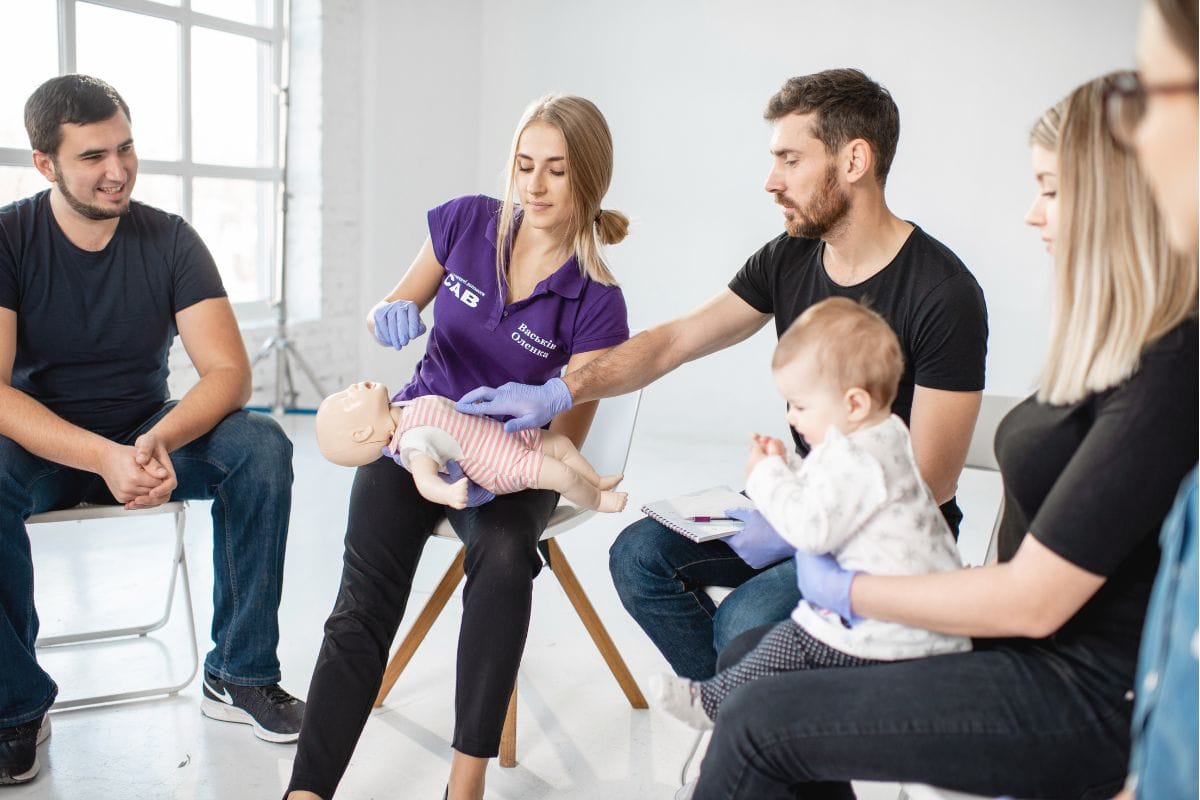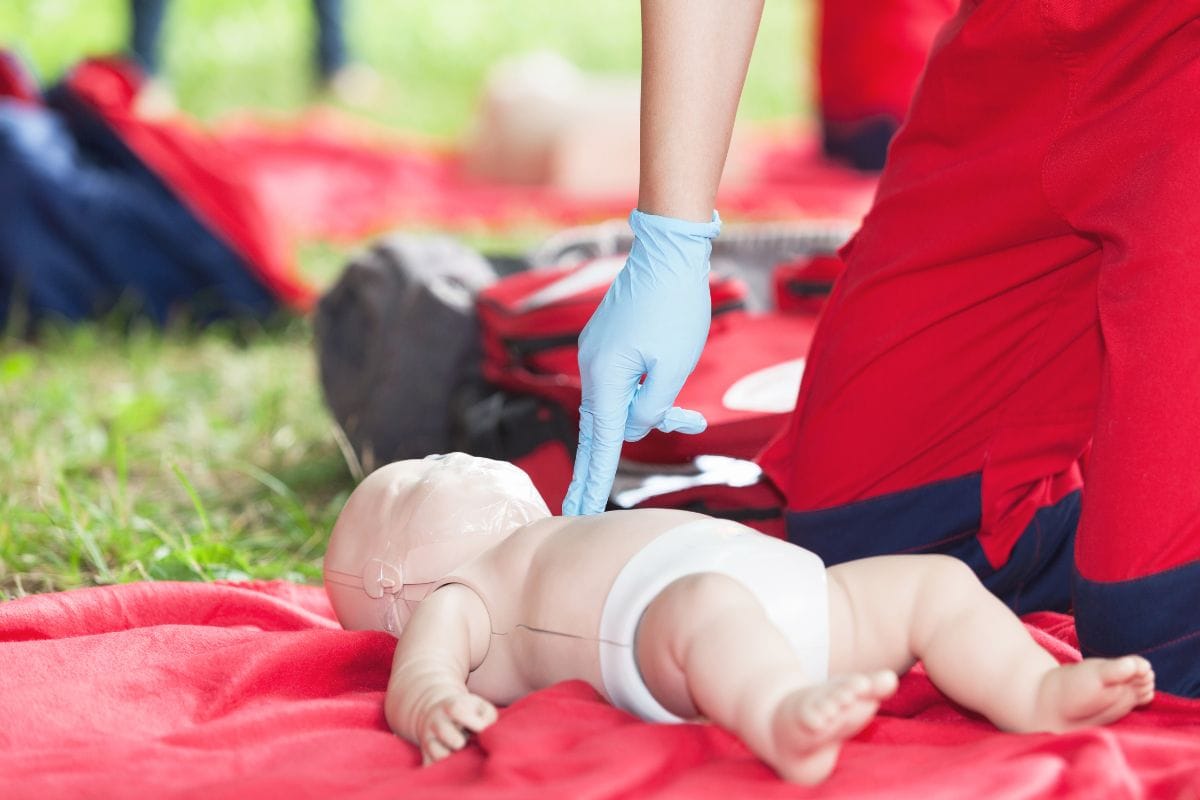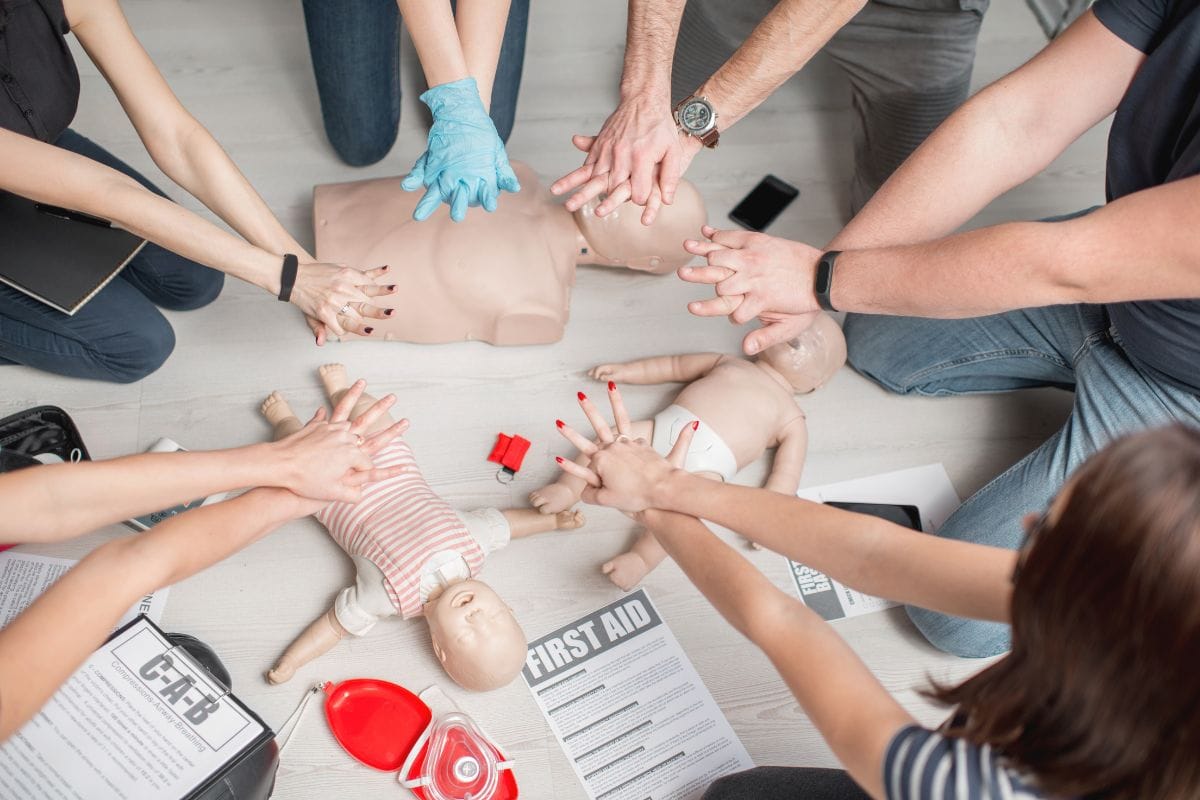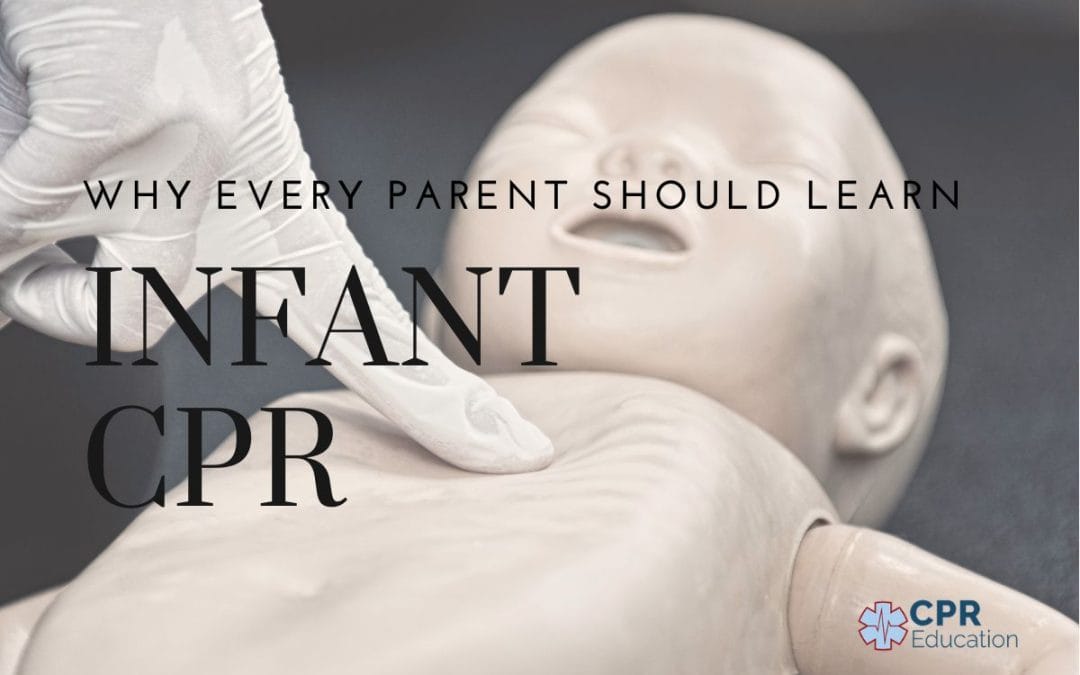Emergencies involving infants can happen instantly; when they do, every second counts. Because their bodies are still developing, infants are more vulnerable to breathing difficulties, cardiac issues, and airway obstructions. Unlike adults, they have smaller airways, weaker immune systems, and limited ability to communicate distress.
Without immediate intervention, a minor incident, such as choking on food or an object, can escalate into a life-threatening emergency. Infant cardiopulmonary resuscitation (CPR) is a crucial skill every parent should learn. It equips caregivers with the knowledge and confidence to act quickly, providing life-saving support until professional medical help arrives.
Common Infant Emergencies That Require CPR

Understanding when to administer CPR is as important as knowing how to do it. Here are the most common emergencies that may require infant CPR:
Choking Hazards
- Small objects, food pieces, and excess mucus can obstruct an infant’s airway.
- Signs include difficulty breathing, blue lips or skin, and inability to cry or make noise.
- Without intervention, choking can lead to oxygen deprivation and cardiac arrest.
Drowning Incidents
- Infants can drown in just a few inches of water, whether in a bathtub, pool or even a household bucket.
- CPR can help restore airflow and circulation until emergency responders arrive if an infant stops breathing after submerging.
Sudden Infant Cardiac Arrest
- Though rare, infants can experience cardiac arrest due to congenital heart defects, infections, or sudden infant death syndrome (SIDS).
- CPR provides crucial oxygen circulation, increasing the chances of survival until defibrillation or further medical care is available.
How CPR Training Empowers Parents

Learning CPR does more than just teach technique—it instills confidence in parents to handle emergencies effectively. Many parents panic during medical crises, but training provides:
- Hands-on Experience – Practical instruction ensures parents can perform CPR accurately and confidently.
- Clear Step-by-Step Guidance – Learning proper hand placement, compression depth, and rescue breathing significantly improves outcomes.
- Increased Awareness – Parents become more alert to potential hazards and risks, allowing them to implement preventive safety measures at home.
Enrolling in CPR certification courses gives parents an added advantage by ensuring they receive structured training from medical professionals, improving their ability to respond under pressure.
What to Expect in an Infant CPR Class

Infant CPR differs from adult CPR, and training classes focus on age-specific techniques that cater to the fragility of an infant’s body. In a certified class, parents can expect:
- Proper Chest Compressions – Learning the correct force and depth for an infant’s chest.
- Rescue Breathing Techniques – Understanding how to gently deliver breaths without causing harm.
- Choking Relief Methods – Practicing the back blows and chest thrusts needed to clear airway obstructions.
A structured CPR class ensures parents develop muscle memory, making their response in real emergencies instinctive rather than hesitant.
Why First Aid Knowledge Complements Infant CPR

While CPR is crucial, it is only one component of emergency preparedness. First aid knowledge enhances a parent’s ability to handle a variety of emergencies. Key first aid skills include:
- Treating Burns and Cuts – Knowing how to cool burns, dress wounds, and prevent infections.
- Responding to Allergic Reactions – Identifying symptoms and administering antihistamines or epinephrine if needed.
- Managing Falls and Head Injuries – Recognizing signs of concussion and understanding when to seek medical attention.
Parents who enroll in first aid and CPR certification classes receive comprehensive training covering resuscitation techniques and general emergency care.
Where to Get Certified and Stay Updated

CPR guidelines evolve as medical research advances, making regular training and recertification essential. Parents should:
- Take Refresher Courses – Even if they’ve learned CPR before, periodic retraining ensures they stay updated on best practices.
- Seek Accredited Training Programs – Look for organizations that offer certified courses recognized by medical institutions.
- Understand New Safety Recommendations – Staying informed about infant health and safety ensures parents have the most relevant knowledge.
Many organizations offer CPR training tailored specifically for parents, ensuring they receive hands-on experience in an engaging and supportive environment.
Empower Yourself with Life-Saving Skills
Infant CPR is not just a skill but a responsibility every parent should embrace. Emergencies are unpredictable, but preparation makes all the difference. By learning CPR, parents can become their child’s first line of defense in critical situations.
Don’t wait for an emergency to happen. Enroll in a CPR class today and gain the life-saving skills that could one day protect the most precious life in your world.
CPR Education offers expert-led infant CPR classes to equip parents with the skills to respond confidently in emergencies. Visit CPREdu.com today to learn more and register for a course near you.

